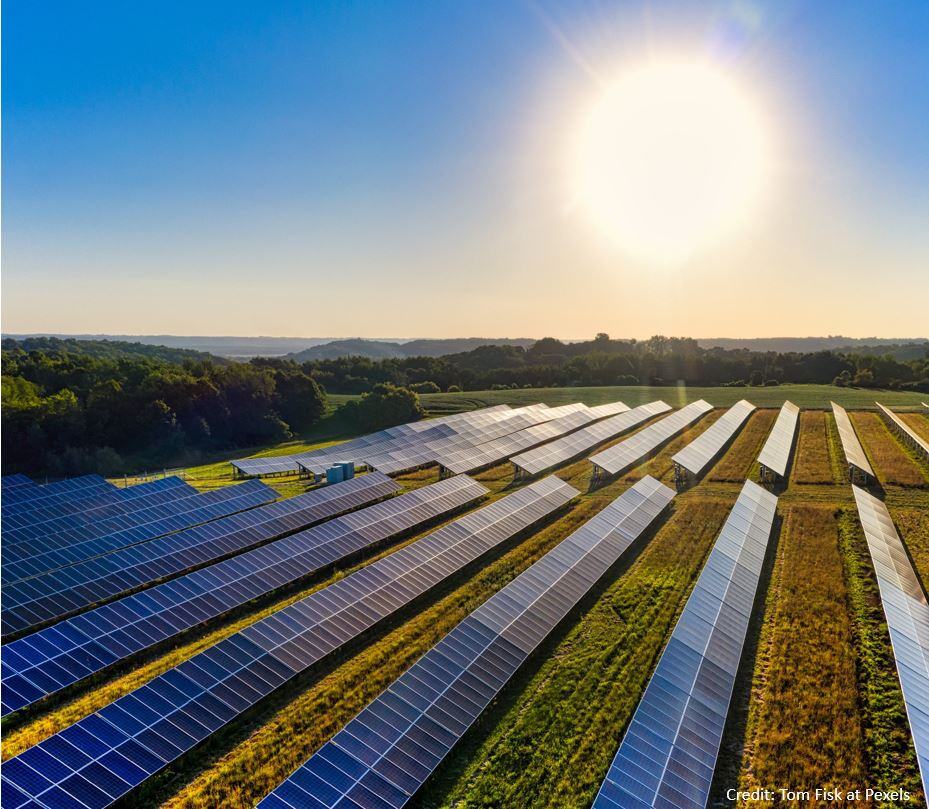
That the sun is capable of supplying enough solar power to meet all earth’s annual energy needs by shining for just 90 minutes is a fact that resonates with cruelty amid rising energy prices and dwindling shale potential.
But, on the plus side, the anecdote points to solar power's untapped potential. According to the International Energy Agency (IEA), solar panel technology could supply up to 49% of the global electricity needs by 2050 – if we can only create the necessary infrastructure to harvest it.
This is an opportunity that China is increasingly exploiting. The country’s current solar boom is driven by the government’s goal to peak carbon emissions before 2030 and achieve carbon neutrality before 2060.
Not only did China’s domestic photovoltaic (PV) installations exceed 44 GW in 2018 and 30 GW the year after, its PV companies have been instrumental in neighbouring Vietnam’s solar energy growth.
Laminate film market prospects
Two layers of ethyl vinyl acetate (EVA) sheeting are used to seal the solar cells within the panel structure. It is the introduction of VA monomers into the molecular chain that gives the material flexibility.
EVA is also resistant to impact and demonstrates low crystallinity. Importantly, the mix gives the material the heat-sealing capacity needed to effectively encapsulate delicate PV cells and circuits. As a casing, EVA protects the solar panel’s technology from UV radiation damage and oxidation following water damage.
Doubling China’s EVA output
As demand for solar grade EVA surged in 2021, Chinese companies set about expanding operations to meet that demand. Solar energy grade EVA has a high vinyl acetate (VA) content of 28% (compared to 18% in non-solar grade) which has generated a huge demand for VAM.
Plant expansion was initiated by Zhejiang Petrochemical and Yanchang Yulin, both of which increased output by 300 ktpa.
Yanchang Yulin, which is based in Shaanxi, China, is a swing plant designed to produce low density polyethylene (LDPE) with the EVA output vital to PV panel design reported to be the core focus. Meanwhile, Yangtze Chemical and Sinochem Quanzhou both increased EVA capacity by 100 ktpa.
In August 2021, Shandong Yulong Petrochemical licensed LyondellBasel’s Lupotech T process technology for a 200 ktpa LDPE line. The Yantai, Shandong-based company will use the same technology for a 300 ktpa EVA copolymer line to produce LDPE with vinyl acetate comonomer, according to the press release.
'EVA prices peaked within the range of Rmb 30,000-32000/ton –
equivalent to $4200-4480/ton before VAT'
Terry Li, Tecnon OrbiChem Consultant
Ethylene Glycol, Ethylene Oxide & Derivatives, Olefins and Polyolefins
Knock on effect pricing
For a country that is already subject to a shortage of ethylene-based vinyl acetate monomer (VAM), the heightened demand for PV solar projects sent prices sky-high, said Tecnon OrbiChem Consultant Terry Li.
'In October 2021, solar energy grade EVA prices peaked within the range of Rmb 30,000-32000/ton (equivalent to $4200-4480/ton before VAT).' In spite of expansions and plans to near-double China’s internal capacity to produce EVA, 'the material’s gross average profit surged to Rmb 9,076/ton – representing a 120% increase on 2020 profits,' Li added.
China currently has an overall EVA capacity of around 1.0 million tpa. For VAM producers using the calcium carbide/acetylene production route, the PV industry's insistence high-ratio ethylene-based VAM means their products do not meet specification.
William Bann, Tecnon OrbiChem's lead business manager, said: 'The rapid increase in China’s domestic EVA production capacity has tightened ethylene-based VAM balances in Asia.
'It will be interesting to see what impact this has on global trade flows in 2022.'
Transatlantic solar growth
But solar power is growing in the US and elsewhere too. Around 13.3 GW was installed across the US in 2019. President Biden’s recent decision to extend Section 201 tariffs for imported solar cells and panels until 2025 could underpin a US manufacturing revival.
In the UK, solar capacity more than doubled to 13.2 MW in the five years to 2019, and it is not waning. November 2021 and January 2022 saw the highest number of new installations since the UK Government’s subsidy scheme ended in 2019.
Consumer appetite for solar-powered projects and panel ownership is likely to grow with the realisation that localised supply frees them from geo-political tensions that trigger volatile energy prices. Even before 2022’s energy price hikes a survey commissioned by the European Climate Foundation found that 86% of people supported new wind and solar projects near their homes.
And since PV economics have improved to the point that a dollar spent today generates four times the electricity it did a decade ago – according to the IEA – the prospect of long-running global solar boom is gaining traction.



 Jane Denny
Jane Denny

